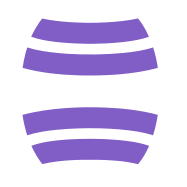Ethereum is more than just another cryptocurrency. It’s a decentralized platform that enables the creation of smart contracts and decentralized applications (DApps). Built on blockchain technology, Ethereum represents a significant leap forward from the simple financial transactions possible with Bitcoin. This blog post delves into the Ethereum protocol, exploring how it’s shaping the landscape of decentralized applications and the Web3 revolution.
Introduction
Since its inception, Ethereum has been at the forefront of the blockchain movement, pioneering the concept of a programmable blockchain. With the vision of its founder, Vitalik Buterin, Ethereum became the first blockchain platform to offer a scripting language for creating complex contracts – what are now known as smart contracts. These self-executing contracts with the terms of the agreement written into code are the backbone of DApps, DAOs (Decentralized Autonomous Organizations), and various blockchain-based innovations.
Body
What is Ethereum?
Ethereum is a decentralized, open-source blockchain system that features its own cryptocurrency, Ether (ETH). It’s designed to act as a platform for developing DApps and as a fuel for operating the distributed application platform. Users can create, publish, monetize, and use applications on the platform, and use its Ether cryptocurrency as payment.
How does Ethereum work?
Smart Contracts
At the heart of Ethereum’s functionality are smart contracts. Smart contracts are pre-written logic (computer code) that are stored on a blockchain and automatically execute when predetermined conditions are met. They are essentially the rules that govern a transaction on the Ethereum platform and are what enable the creation of complex DApps.
Ethereum Virtual Machine (EVM)
The EVM is the runtime environment for smart contracts in Ethereum. It’s not only a critical part of the Ethereum protocol but also the engine that runs the smart contracts on each node across the network. It allows the scripts written in Ethereum’s native coding language, Solidity, to execute on the blockchain.
Key Features and Innovations
One of the unique aspects of Ethereum is its ability to create and host tokens, which can represent a wide variety of assets or utilities. This spawned the initial coin offering (ICO) movement, where developers could sell tokens related to their DApps to raise capital.
Another critical innovation stemming from Ethereum is the concept of decentralized finance (DeFi). By using Ethereum’s smart contracts, financial instruments such as loans, insurance, and savings programs can be created without the need for traditional financial intermediaries.
Ethereum 2.0
Ethereum is currently undergoing a significant upgrade known as Ethereum 2.0, or Eth2. This upgrade aims to improve scalability and security while shifting the network from a proof-of-work (PoW) consensus mechanism to a proof-of-stake (PoS) system. Eth2 aims to reduce energy consumption, allow the network to process more transactions, and enhance its overall performance.
Conclusion
Ethereum has redefined what blockchain technology is capable of. It’s not merely a platform for financial transactions but a foundation for a burgeoning ecosystem of decentralized applications. Through its implementation of smart contracts and the development of the Ethereum Virtual Machine, Ethereum has unlocked countless possibilities for developers and innovators.
As Ethereum continues to evolve with the transition to Ethereum 2.0, its role within the Web3 landscape is likely to expand further. With unparalleled capabilities and an ever-growing community, Ethereum stands as a vital protocol for anyone interested in the decentralized future of the internet. Whether for decentralized finance, tokenization of assets, or creating autonomous organizations, Ethereum is at the core of a revolution that is reimagining how we interact with digital services. And as the ecosystem flourishes, we can only anticipate more innovation and disruption to come from this robust platform.

